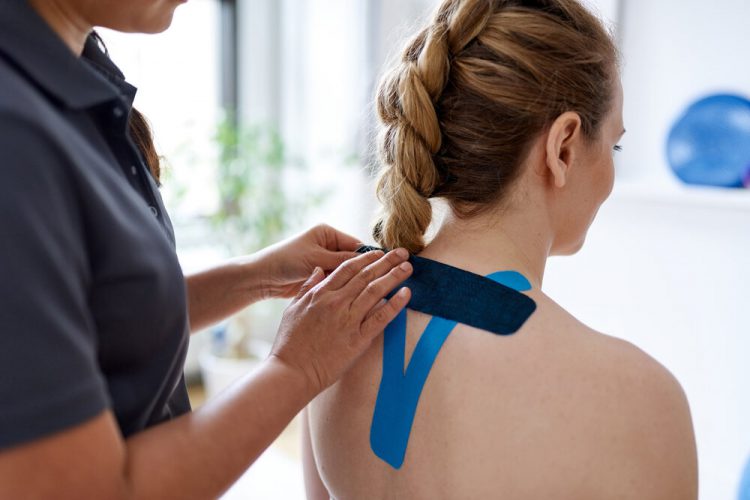
All about taping

You may have heard of sports taping. Or perhaps you’ve noticed Olympic athletes wearing strips of colored tape on their shoulder, knee or lower back. Did you know that various types of taping are also available to the general public and that they can be used to treat several types of musculo-skeletal problems? The different taping approaches have different roles. Here are the main techniques.
Neuro-proprioceptive taping
Its main goal is to guide movement and improve joint function at the point where it is applied. It makes it possible to activate or inhibit certain muscles and even provide modest support. For example, in a case of shoulder tendinitis, taping helps position the joint better and reduce stress on the tendon. It is even more effective if it is accompanied by specific exercises. Neuro-proprioceptive taping can also be used to reduce edema (swelling) or alleviate muscle tension points.
Dynamic taping
This tape is elastic just like neuro-proprioceptive tape, but it affords more elastic resistance. It helps with limb or joint movement while decreasing the work effort demanded of it.
Stabilizing or posture correction taping
There are other types of tape that are more rigid and inelastic and used to stabilize a joint or correct a movement or posture. For example, following a recent ankle sprain, a woman who wants to resume hiking can use this kind of tape to give her ankle greater stability. It will also be important to strengthen her ankle with appropriate exercises.
Compression taping
Compression tape is applied in response to a muscle pull or strain. Direct compression on the injured muscle can reduce pain and swelling and improve its function. It also usually shortens the recovery period.
If used properly, taping is a very valuable technique in the healing process for many types of injuries. To be most effective, it should be part of a comprehensive treatment plan to correct the problem. Your physical therapist will be able to work with you to determine the best treatment plan to address your issue.


